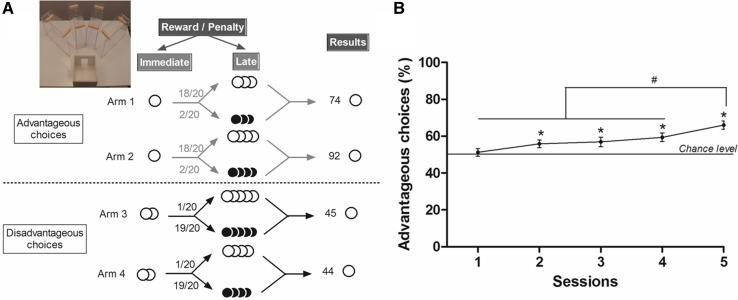Fig. 1.
a Schematic representation of the MGT experimental design and picture of the maze. White circle represented food pellets and black circle quinine pellets. Advantageous choices gave access to one food pellet and then to three or four food pellets (18/20) or quinine pellets (2/20). Disadvantageous choices gave access to two food pellets and then to four or five food pellets (1/20) or quinine pellets (19/20). We distinguished advantageous choices from disadvantageous ones because mice earned more pellets (74 or 92 pellets vs. 45 or 44 pellets) after 20 trials by choosing the advantageous ones. b Overall percentage (n = 54) of advantageous choices (mean ± SEM) for each daily session (1–5). Percentage of advantageous choices at session 5 differed from the other four sessions (W, # p < 0.05) and advantageous choices differed from chance level from session 2 to session 5 (W, *p < 0.05)

